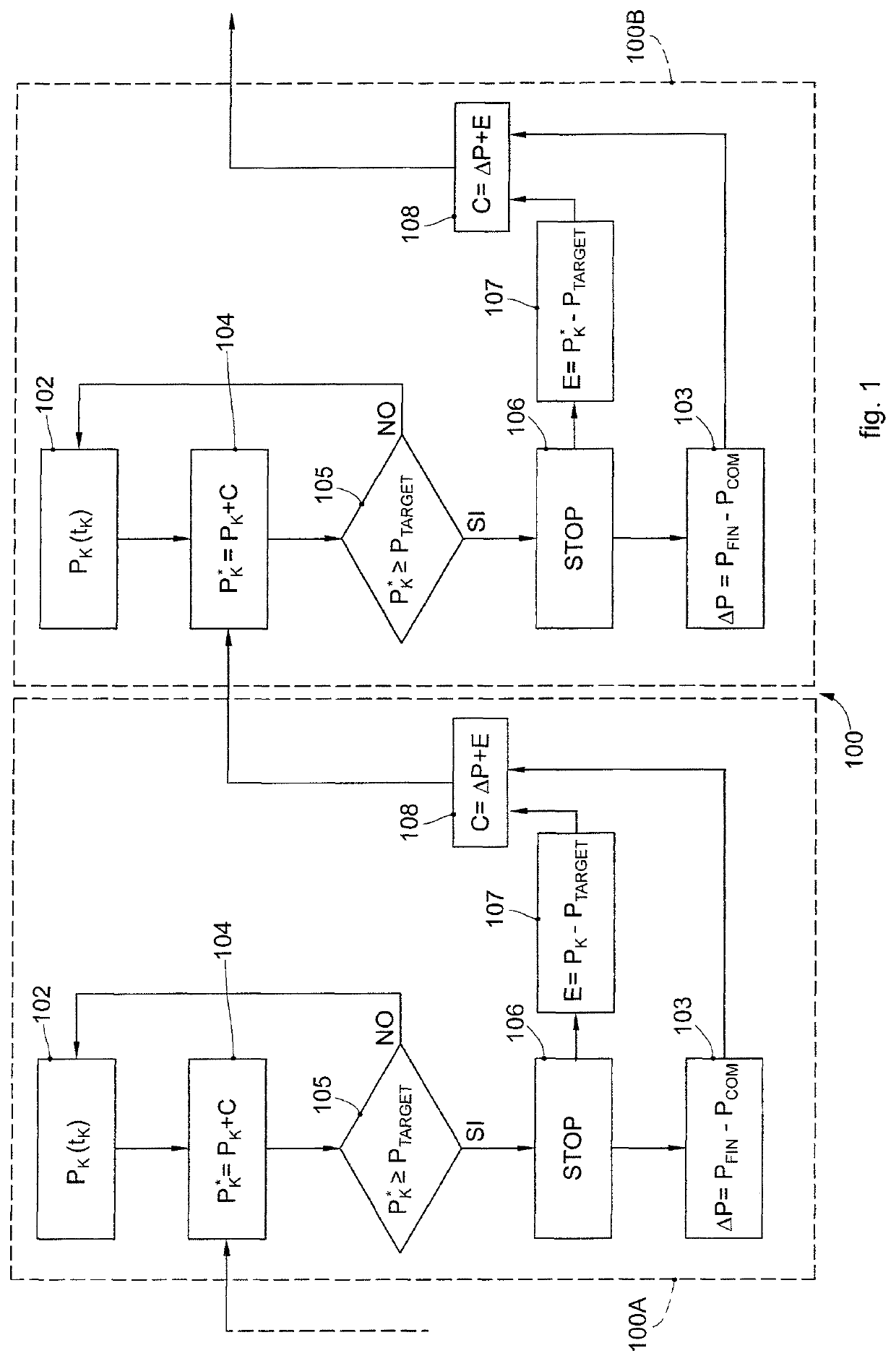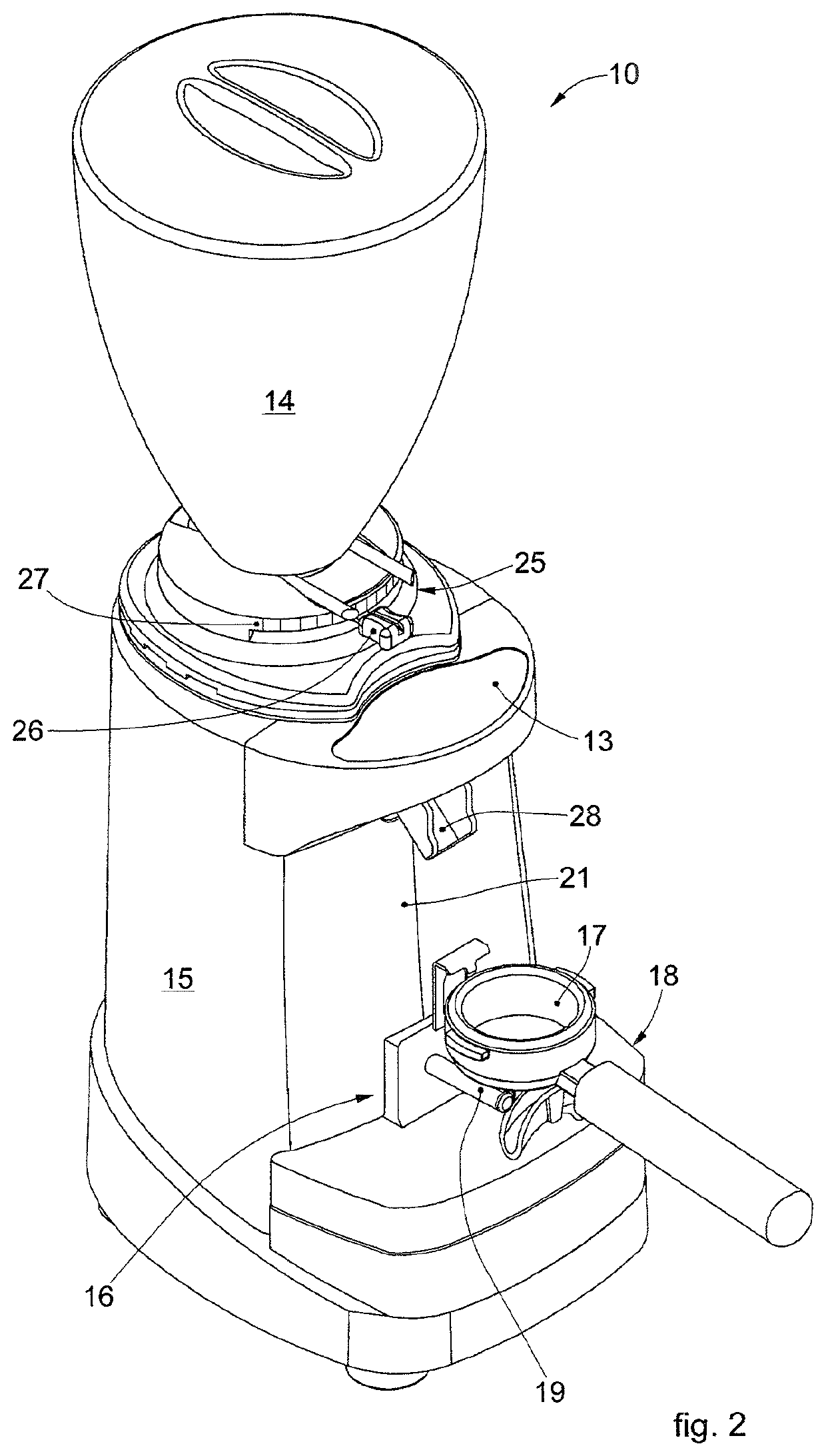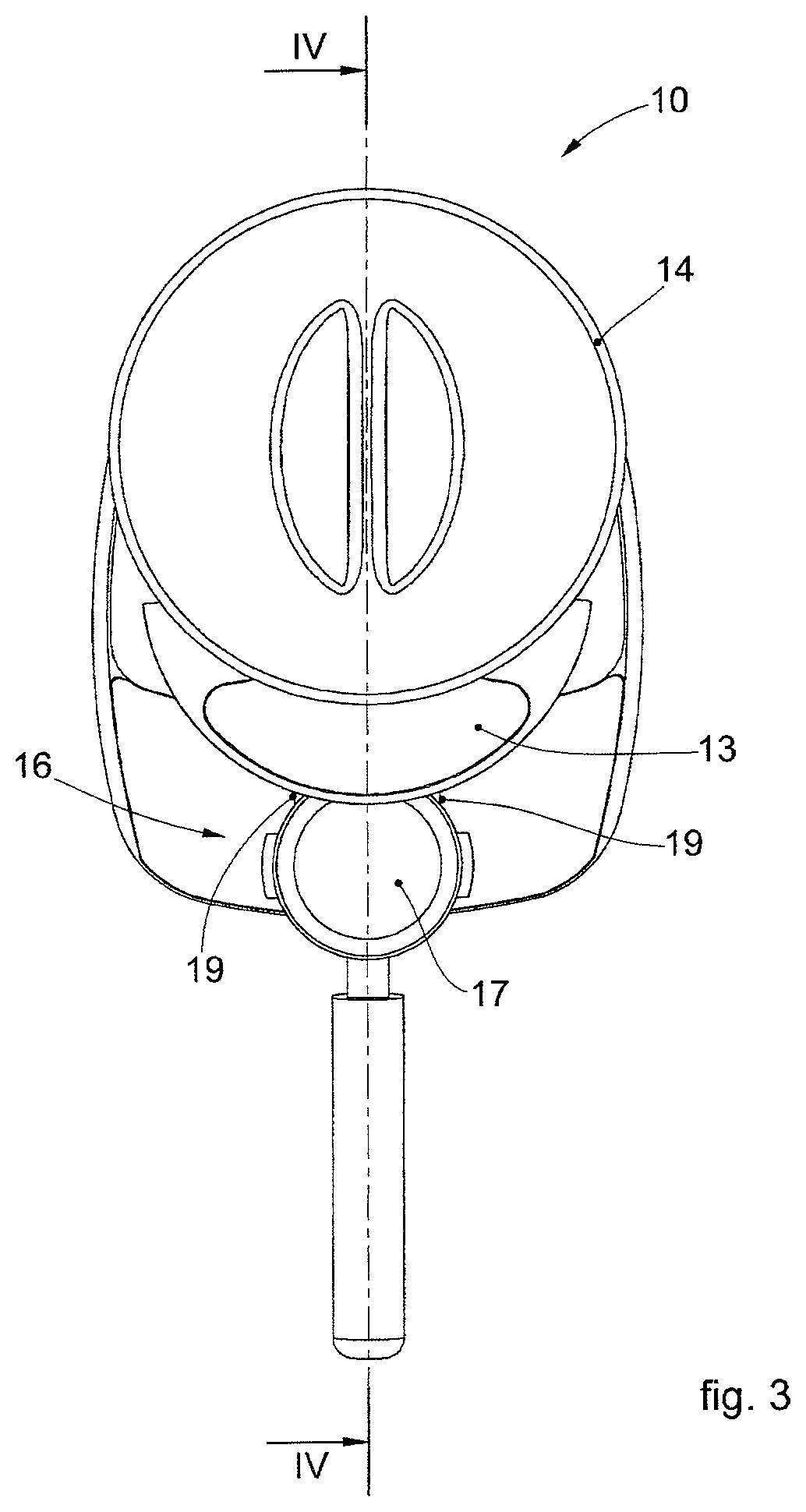Method and apparatus to grind a product
a technology of a product and a grinding device, which is applied in the direction of spice mills, kitchen equipment, domestic applications, etc., can solve the problems of few tenths of a second of advance or delay, affecting the quantity of powder delivered, and the quantity of grains entering the mill of the grinding device can be significantly differen
- Summary
- Abstract
- Description
- Claims
- Application Information
AI Technical Summary
Benefits of technology
Problems solved by technology
Method used
Image
Examples
Embodiment Construction
[0049]We will now refer in detail to the various embodiments of the present invention, of which one or more examples are shown in the attached drawings. Each example is supplied by way of illustration of the invention and shall not be understood as a limitation thereof. For example, the characteristics shown or described insomuch as they are part of one embodiment can be adopted on, or in association with, other embodiments to produce another embodiment. It is understood that the present invention shall include all such modifications and variants.
[0050]With reference to FIG. 1, we will now describe a method according to the invention to grind a product. In particular, the method according to the invention can be advantageously used to grind a product in grains, or in beans, such as for example coffee.
[0051]The drawing shows the steps relating to a plurality of delivery cycles 100, in which the steps relating to each delivery cycle are grouped together within a single broken line. By...
PUM
 Login to View More
Login to View More Abstract
Description
Claims
Application Information
 Login to View More
Login to View More - R&D
- Intellectual Property
- Life Sciences
- Materials
- Tech Scout
- Unparalleled Data Quality
- Higher Quality Content
- 60% Fewer Hallucinations
Browse by: Latest US Patents, China's latest patents, Technical Efficacy Thesaurus, Application Domain, Technology Topic, Popular Technical Reports.
© 2025 PatSnap. All rights reserved.Legal|Privacy policy|Modern Slavery Act Transparency Statement|Sitemap|About US| Contact US: help@patsnap.com



